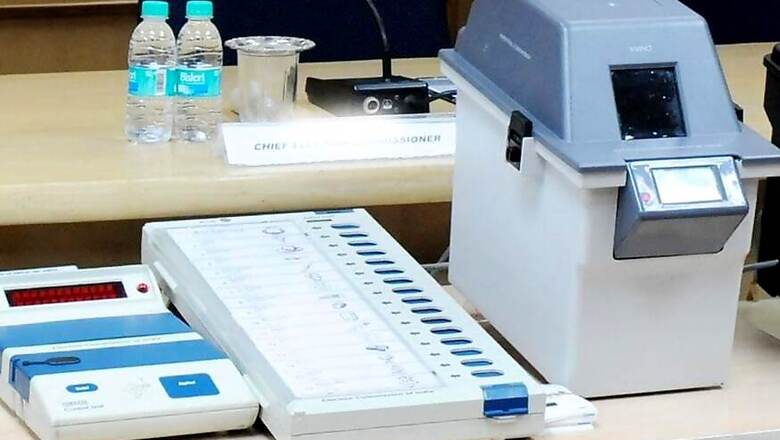
views
New Delhi: As the country prepares itself for the Lok Sabha elections, the democracy’s largest exercise, which begins from April 11, nearly one million polling stations will be set up, in an up by 10.1% from the 2014 elections; and 2.33 million ballot units, 1.63 million control units, along with 1.74 million VVPATs will be arranged.
Voter Verifiable Paper Audit Trail (VVPAT) machines are used during election process to verify that the vote polled by a voter goes to the correct candidate. First introduced during the Lok Sabha Elections 2014 to improve voter confidence and ensuring transparency of voting, the Chief Election Commissioner (CEC) last year, mandated the 100% use of VVPAT machines for polls and said that 16.5 lakh machines will be used.
But how did the VVPAT become an indispensable part of our electoral fabric? News18 looks at the VVPAT system, its functions and how it would aid the 17th Lok Sabha Elections:
What are VVPAT machines?
Voter Verifiable Paper Audit Trail (VVPAT) is a feature of the electronic voting machine which was first used during the Goa elections.
VVPAT is a way of giving feedback to voters using ballot-free voting system. This arrangement gives the voter the chance to verify their vote. VVPAT has a kind of a printer connected to the EVM , placed in a glass case, in a way that only the voter can see it.
After a voter presses the button on the EVM against the chosen candidate, the VVPAT prints a slip containing details such as the name of the candidate and the election symbol and drops it automatically into a sealed box. The slip is displayed to the voter for seven seconds, after which the VVPAT machine drops in into the storage box with a beep.
The purpose of a VVPAT is to confirm the authenticity of the Electronic Voting Machines (EVMs).
What is the composition of this machine?
The VVPAT paper roll is designed for printing 1,500 ballot slips for each election. A VVPAT machine consists of:
1) Printer: A printer that generates the physical record of the voter's selection.
2) Display Unit: The display interface that shows errors, if any.
How does it work?
Let us divide this into steps:
When a voter presses the button on the Voter Verifiable Paper Audit Trail machine against the chosen candidate, a printed VVPAT slip is displayed for 7 seconds before it's automatically cut and delivered to a sealed ballot compartment
The printer which is attached to the direct-recording electronic (DRE) voting machines generates the physical record mentioned above, which is then stored in the VVPAT machine.
What if there is a dispute with regard to results? Can a voter carry the slip printed outside the polling booth?
No, the voter can only see the printed slip and cannot carry it with them after casting the vote. It merely acts as a record available behind a transparent surface to enable a voter to confirm the printed record matches the electronic ballot.
The records can be manually counted and compared to the total electronic votes in case of a dispute. The solution linking electronic ballot images and the voter-verified paper record with randomly generated unique voting session identifier, is covered by patents, either issued or pending.
A printer is attached to DRE voting machines that prints records on special paper with security features. The printed page contains both a plain text record and a simple barcode of the voter's selections. This page, is the official ballot that is then fed through a scanner into a locked ballot box, so that all originals are saved in case of a need for a recount or audit.
The electronic record generated from the DRE is compared with the barcode scanner record. It is important to note that in case of a discrepancy, the paper ballots are used to determine the official vote, and not the electronic record.
This means that the voter has the ability to proofread the ballot before it is placed into the scanner/lockbox and have it voided if there is any error, in the same way, as it is done with manual voting systems.
Did the VVPAT matter ever reach the top court?
The Supreme Court on April 13, 2017, asked the Centre to respond by May 8 to a plea by the BSP to comply with a 2013 Supreme Court directive to introduce paper trail in EVMs. In 2013, the SC had asked the Commission to introduce paper trails in EVMs in a phased manner for the 2014 Lok Sabha Elections.
"EVMs with VVPAT system ensure the accuracy of the voting system. With an intent to have fullest transparency in the system and to restore the confidence of the voters, it is necessary to set up EVMs with VVPAT system because vote is nothing but an act of expression which has immense importance in democratic system," the Bench had said.
















Comments
0 comment